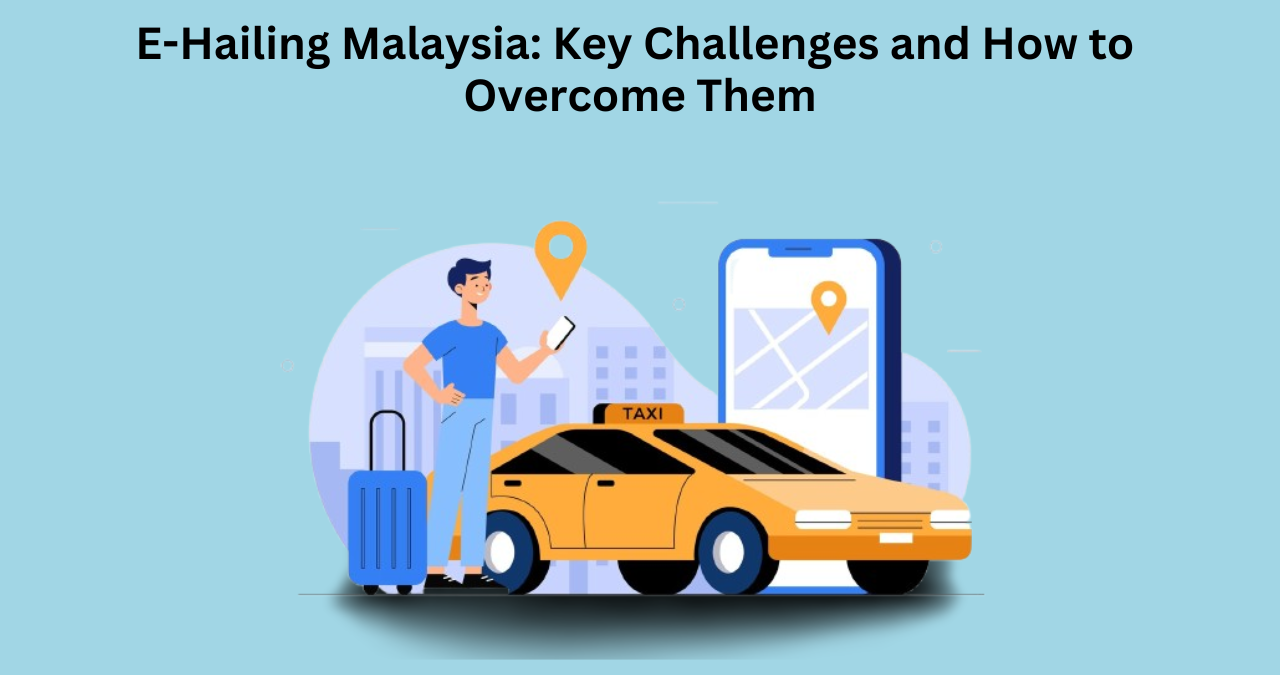business services
E-Hailing Malaysia: Key Challenges and How to Overcome Them
E hailing Malaysia has transformed the transportation industry, offering convenient and affordable rides through digital platforms. However, despite its rapid growth, the industry faces several challenges that impact drivers, passengers, and service providers. From regulatory hurdles to competition, these challenges must be addressed for sustainable success.
In this article, we will explore the key challenges in e-hailing Malaysia and how businesses can overcome them to build a strong and reliable ride-hailing service.
Understanding the Challenges in E Hailing Malaysia
Before diving into solutions, it is important to recognize the common obstacles that affect e hailing services. The key challenges include:
- Regulatory issues and compliance
- High competition in the market
- Driver retention and earnings
- Passenger safety and security concerns
- Technology and operational efficiency
By addressing these challenges, businesses can improve their service quality and ensure long-term sustainability.
Key Challenges and Solutions
1. Regulatory Issues and Compliance
The Malaysian government has strict regulations for e hailing services to ensure passenger safety and fair competition. These include:
- Driver registration and licensing requirements
- Compliance with local tax laws
- Vehicle inspections and safety checks
- Data protection and privacy regulations
How to Overcome This Challenge:
- Work closely with local authorities to ensure full compliance
- Educate drivers on licensing and permit requirements
- Implement strong data security measures to protect user information
- Regularly update policies to align with changing regulations
Following government guidelines helps businesses build credibility and avoid legal issues.
2. High Competition in the Market
The e hailing market in Malaysia is highly competitive, with major players like Grab and inDrive dominating the industry. New entrants often struggle to gain market share.
How to Overcome This Challenge:
- Offer unique services such as budget-friendly rides, premium options, or eco-friendly vehicles
- Provide better driver incentives to attract and retain partners
- Focus on customer experience by improving ride quality and reducing wait times
- Develop strong marketing campaigns and referral programs to attract users
Differentiating services and focusing on customer satisfaction can help businesses stand out.
3. Driver Retention and Earnings
Many drivers face challenges such as high commission fees, fluctuating ride demand, and rising fuel costs. This leads to dissatisfaction and high driver turnover.
How to Overcome This Challenge:
- Reduce commission rates or introduce performance-based incentives
- Provide fuel subsidies or discounts at partner fuel stations
- Offer flexible working hours and driver support programs
- Implement a transparent earnings system to ensure fair pay
Ensuring fair compensation and support helps retain drivers and improves service reliability.
4. Passenger Safety and Security Concerns
Safety is a top priority for passengers and drivers. Issues like unverified drivers, harassment cases, and ride cancellations affect user trust.
How to Overcome This Challenge:
- Conduct strict background checks for all drivers before onboarding
- Introduce in-app safety features such as emergency SOS buttons and ride tracking
- Allow passengers to share trip details with friends or family
- Implement a rating system where passengers and drivers can report concerns
Strong safety measures increase passenger confidence and improve overall service quality.
5. Technology and Operational Efficiency
Efficient app performance is essential for smooth ride bookings, payments, and tracking. Poorly designed apps with slow response times lead to customer frustration.
How to Overcome This Challenge:
- Invest in robust app development with real-time GPS tracking and smooth navigation
- Optimize payment processing to support multiple payment methods
- Use AI-based algorithms to reduce ride wait times and match drivers efficiently
- Conduct regular app updates to fix bugs and improve user experience
A well-functioning app ensures seamless operations and improves customer satisfaction.
Read More: InDriver Clone App – Develop a Flexible Ride-Hailing Solution
Future Trends in E Hailing Malaysia
To stay ahead in the competitive ride-hailing industry, businesses must embrace emerging trends. Some key trends shaping the future of e hailing Malaysia include:
1. Electric and Hybrid Vehicles
With growing environmental concerns, many e hailing companies are shifting towards electric and hybrid vehicles to reduce carbon emissions. Offering eco-friendly ride options can attract environmentally conscious riders.
2. AI-Powered Ride Optimization
Artificial intelligence is improving ride-matching efficiency by analyzing real-time traffic, driver availability, and passenger demand. This results in shorter wait times and smoother rides.
3. Integration with Public Transport
Some e hailing platforms are collaborating with public transport networks to provide seamless connectivity. This integration allows users to book multimodal transport options within a single app.
4. Subscription-Based Ride Services
Many platforms are introducing monthly ride subscriptions for frequent users. These plans offer cost-effective rides and encourage long-term customer loyalty.
How Businesses Can Succeed in E Hailing Malaysia
To thrive in the competitive e hailing market, businesses should focus on:
- Customer-Centric Approach: Prioritize user experience by offering reliable, affordable, and safe rides.
- Driver Support Programs: Keep drivers engaged with incentives, training programs, and better earning opportunities.
- Advanced Technology: Invest in AI, GPS tracking, and data security to enhance service efficiency.
- Sustainable Growth Strategies: Adapt to market trends and regulatory changes to ensure long-term success.
Conclusion
E hailing Malaysia is an evolving industry with many challenges, but businesses that implement strong strategies can achieve success. By focusing on regulatory compliance, driver satisfaction, safety measures, and technology, service providers can build a reliable and competitive ride-hailing platform.
For companies looking to develop a feature-rich ride-hailing app, partnering with an on demand app development company can ensure a seamless and scalable solution.
